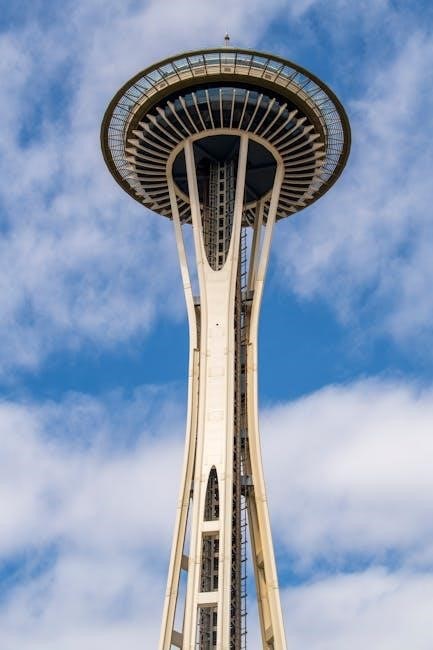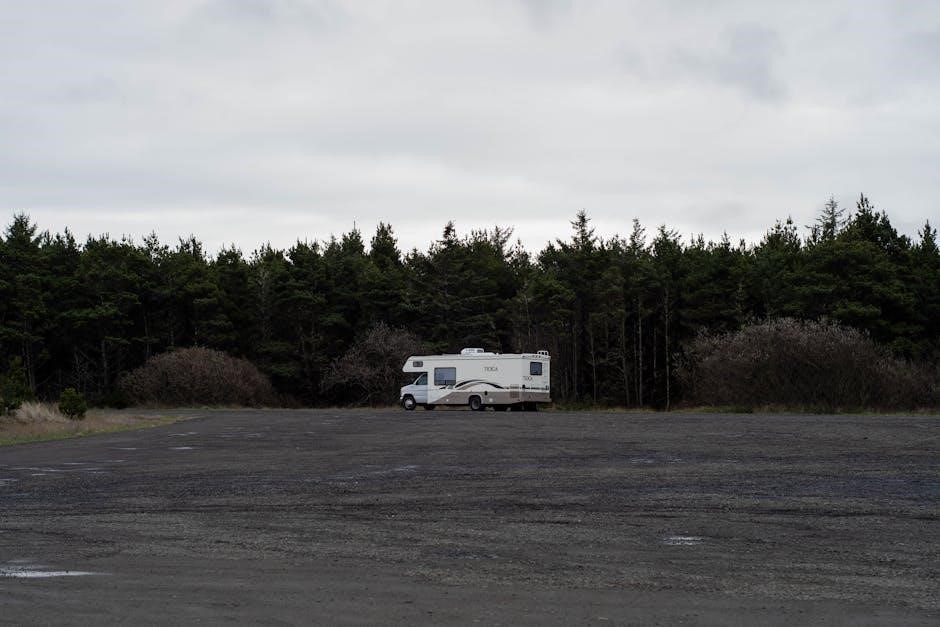The Stormwater Manual for Western Washington provides essential guidance for managing stormwater effectively, offering updated standards and practices for sustainable stormwater management in the region.
1.1 Overview of the Manual’s Purpose and Scope
The Stormwater Manual for Western Washington serves as a comprehensive guide for managing stormwater effectively. Its purpose is to provide updated standards, design criteria, and best practices for stormwater management. The manual covers hydrology, hydraulics, and water quality, ensuring compliance with local, state, and federal regulations. It is designed for engineers, planners, and regulators to promote sustainable stormwater solutions, addressing both urban and rural drainage needs across the region.
1.2 Key Definitions and Terminology
The manual defines critical terms like Best Management Practices (BMPs), Low Impact Development (LID), and Green Stormwater Infrastructure (GSI). These terms are essential for understanding stormwater management strategies. BMPs refer to practices that reduce pollution, while LID focuses on mimicking natural hydrology. GSI integrates vegetation and soil to manage runoff. Clear definitions ensure consistency and effective implementation of stormwater solutions in Western Washington.
Regulatory Framework Governing Stormwater Management
The regulatory framework ensures compliance with local, state, and federal laws, guiding stormwater management practices to protect water quality and ecosystems in Western Washington.
2.1 Local and State Regulations
Local and state regulations in Western Washington require adherence to specific stormwater management standards, ensuring compliance with the Stormwater Management Manual. These regulations include guidelines for drainage design, water quality protection, and environmental sustainability. Municipalities and counties enforce these rules to maintain ecological balance and public health. The manual serves as a reference for implementing these regulations effectively.
2.2 Federal Requirements and Compliance
Federal requirements mandate that stormwater management in Western Washington align with national environmental standards. The Clean Water Act and NPDES permits guide compliance, ensuring water quality and pollution control. The Stormwater Management Manual incorporates these federal guidelines, providing a framework for municipalities to meet regulatory obligations while protecting aquatic ecosystems and public health through effective stormwater practices.
Design Principles for Stormwater Facilities
Design principles focus on hydrologic and hydraulic efficiency, integrating green infrastructure to manage runoff sustainably while protecting water quality and ecosystems in Western Washington.
3.1 Hydrologic and Hydraulic Design Considerations
Hydrologic and hydraulic design considerations in the manual emphasize accurate runoff analysis, drainage system sizing, and water quality protection. These principles ensure designs manage flow rates, volumes, and water quality effectively, protecting infrastructure and ecosystems. Compliance with local regulations and environmental standards is integrated into the design process to maintain sustainable stormwater management practices in Western Washington.
3.2 Green Stormwater Infrastructure (GSI) Design
Green Stormwater Infrastructure (GSI) design focuses on sustainable practices like bioretention, rain gardens, and permeable pavements to manage runoff naturally. The manual provides guidelines for integrating GSI into urban landscapes, emphasizing benefits such as improved water quality and enhanced biodiversity. Design considerations include site selection, soil composition, and vegetation to ensure effective stormwater capture and treatment, aligning with environmental goals and community aesthetics.
Stormwater Management Practices
This section presents effective strategies for managing stormwater, including Best Management Practices (BMPs) and Low Impact Development (LID) techniques to mitigate runoff impacts and protect water quality.
4.1 Best Management Practices (BMPs) for Stormwater
Best Management Practices (BMPs) are strategies to effectively reduce stormwater runoff and improve water quality. Examples include permeable pavements, rain gardens, and bioswales. These practices minimize pollution by filtering and slowing runoff, protecting aquatic habitats. Regular maintenance, such as inspections and debris removal, ensures BMP effectiveness. BMPs are integral to complying with regulations and achieving sustainable stormwater management goals outlined in the manual.
4.2 Low Impact Development (LID) Techniques
Low Impact Development (LID) techniques emphasize stormwater management through green infrastructure. Strategies include rain gardens, green roofs, and permeable pavements. These methods mimic natural hydrologic processes, reducing runoff and filtering pollutants. LID promotes water conservation and enhances urban resilience. The manual highlights LID as a key approach for sustainable stormwater management, aligning with environmental goals and regulatory compliance in Western Washington.
Case Studies and Examples
This section showcases successful stormwater management projects in Western Washington, highlighting innovative strategies and their environmental benefits, aligned with regional regulations and best practices.
5.1 Successful Stormwater Management Projects in Western Washington
Several projects in Western Washington demonstrate effective stormwater management, such as green infrastructure implementations and innovative drainage systems. These projects align with updated manual standards, showcasing sustainable practices that mitigate runoff impacts. For instance, cities like Kent have adopted designs that integrate rain gardens and permeable pavements, reducing pollution and enhancing water quality. These successes highlight community engagement and adaptive strategies for stormwater challenges.
5.2 Lessons Learned from Implementing the Manual
Implementation of the Stormwater Manual has revealed key lessons, including the importance of public input and adaptive management. Updates in 2012 addressed clarity on green infrastructure and compliance. Public comments highlighted the need for streamlined permitting processes. Case studies underscored the effectiveness of collaborative approaches between stakeholders. These insights have refined the manual, ensuring it remains a practical tool for addressing stormwater challenges in Western Washington.

Updates and Revisions to the Manual
The Stormwater Manual for Western Washington has undergone updates, including Ecology’s 2012 revisions, to incorporate green stormwater infrastructure and improve compliance with federal and state regulations.
6.1 Recent Changes and Their Implications
Recent updates to the Stormwater Manual for Western Washington include adopting the 2012 manual for unincorporated areas and integrating green stormwater infrastructure (GSI). These changes enhance compliance with federal and state regulations, promoting sustainable practices. The updates also streamline design guidelines, ensuring consistency across jurisdictions and addressing environmental challenges more effectively. These revisions aim to improve stormwater management efficiency and adapt to evolving environmental standards.
6.2 Public Comments and Feedback Integration
Public comments and feedback play a crucial role in refining the Stormwater Manual for Western Washington. Ecology has implemented a structured process to collect and address stakeholder input, ensuring transparency and responsiveness. Comments are systematically reviewed, categorized, and incorporated to enhance the manual’s clarity and effectiveness. This collaborative approach fosters improved stormwater management practices and adapts to evolving community needs and environmental challenges.

Tools and Resources for Stormwater Management
The manual provides access to software, models, and supplementary materials, such as SWMM 5 xl and Ecology’s guidance documents, to aid in effective stormwater analysis and design.
7.1 Software and Models for Stormwater Analysis
The Stormwater Manual for Western Washington recommends tools like SWMM 5 xl, a comprehensive model for urban stormwater systems, with a detailed 1,001-page user guide. Published by CHI, it aids in hydrologic and hydraulic modeling. Ecology’s 2019 manual integrates these tools for drainage design and analysis, ensuring compliance with updated standards and practices for effective stormwater management in the region.
7.2 Guidance Documents and Supplementary Materials
The manual is supported by supplementary materials, including a 1,001-page user guide for SWMM 5 xl. Ecology’s 2019 manual and the GSI Manual provide additional design guidance. These resources offer detailed instructions for stormwater management, ensuring compliance with updated standards and practices. They are essential for professionals designing and reviewing stormwater facilities, aiding in the practical application of the manual’s principles and requirements effectively.

Challenges and Solutions in Stormwater Management
Challenges include aging infrastructure and regulatory compliance. Solutions involve innovative designs, public education, and adopting new technologies to enhance stormwater systems’ efficiency and sustainability.
8.1 Common Challenges in Implementing the Manual
Common challenges include keeping pace with regulatory updates, integrating public feedback, and adapting to regional hydrological conditions. Additionally, balancing maintenance requirements with limited resources and ensuring compliance with evolving standards can pose difficulties. These issues require collaborative efforts and innovative approaches to achieve effective stormwater management outcomes across Western Washington.
8.2 Innovative Solutions for Stormwater Issues
Innovative solutions include integrating Green Stormwater Infrastructure (GSI) and advanced modeling tools like SWMM 5 for better system design. Low Impact Development (LID) techniques, such as permeable pavements and rain gardens, enhance stormwater management. Additionally, community engagement and educational programs foster stewardship and participation in stormwater initiatives, ensuring sustainable and effective solutions for Western Washington’s unique challenges.

Maintenance and Inspection of Stormwater Systems
Regular maintenance and inspections are crucial for stormwater systems in Western Washington. Activities include cleaning, repairs, and ensuring systems function properly. Proper documentation is essential for compliance.
9.1 Best Practices for System Maintenance
Regular inspections and maintenance are vital to ensure stormwater systems function efficiently. This includes cleaning, repairing, and monitoring for damage. Vegetation management and debris removal are critical. Schedules should be customized based on system type and environmental conditions. Proper documentation of maintenance activities ensures compliance and accountability, supporting long-term system performance and environmental protection.
9.2 Inspection Protocols and Reporting Requirements
Stormwater systems must adhere to strict inspection protocols to ensure functionality and compliance. Regular visual inspections are required to identify issues like clogging or erosion. Detailed reports must document findings, repairs, and maintenance activities. Reporting requirements include submitting inspection logs to regulatory bodies, ensuring transparency and accountability. Compliance with Ecology’s Stormwater Management Manual standards is mandatory to maintain environmental integrity and public safety.
The Stormwater Manual for Western Washington is a comprehensive guide for effective stormwater management. Future updates will focus on innovative technologies and sustainable practices.
10.1 Summary of Key Takeaways
The Stormwater Manual for Western Washington offers comprehensive guidance on managing stormwater effectively. It emphasizes regulatory compliance, Best Management Practices, and innovative solutions like Green Stormwater Infrastructure. The manual highlights the importance of hydrologic and hydraulic design considerations, maintenance protocols, and public engagement. By integrating lessons from successful projects and addressing implementation challenges, it provides a roadmap for sustainable stormwater management in Western Washington, ensuring environmental protection and community resilience.
10.2 Future Trends in Stormwater Management
Future trends in stormwater management emphasize Green Stormwater Infrastructure, advanced hydrologic modeling, and climate-resilient designs. Integration of digital tools and data analytics will enhance predictive capabilities and system performance. Increasing focus on community engagement and adaptive management practices will shape sustainable solutions, ensuring stormwater systems adapt to evolving environmental challenges and regulatory requirements in Western Washington.
